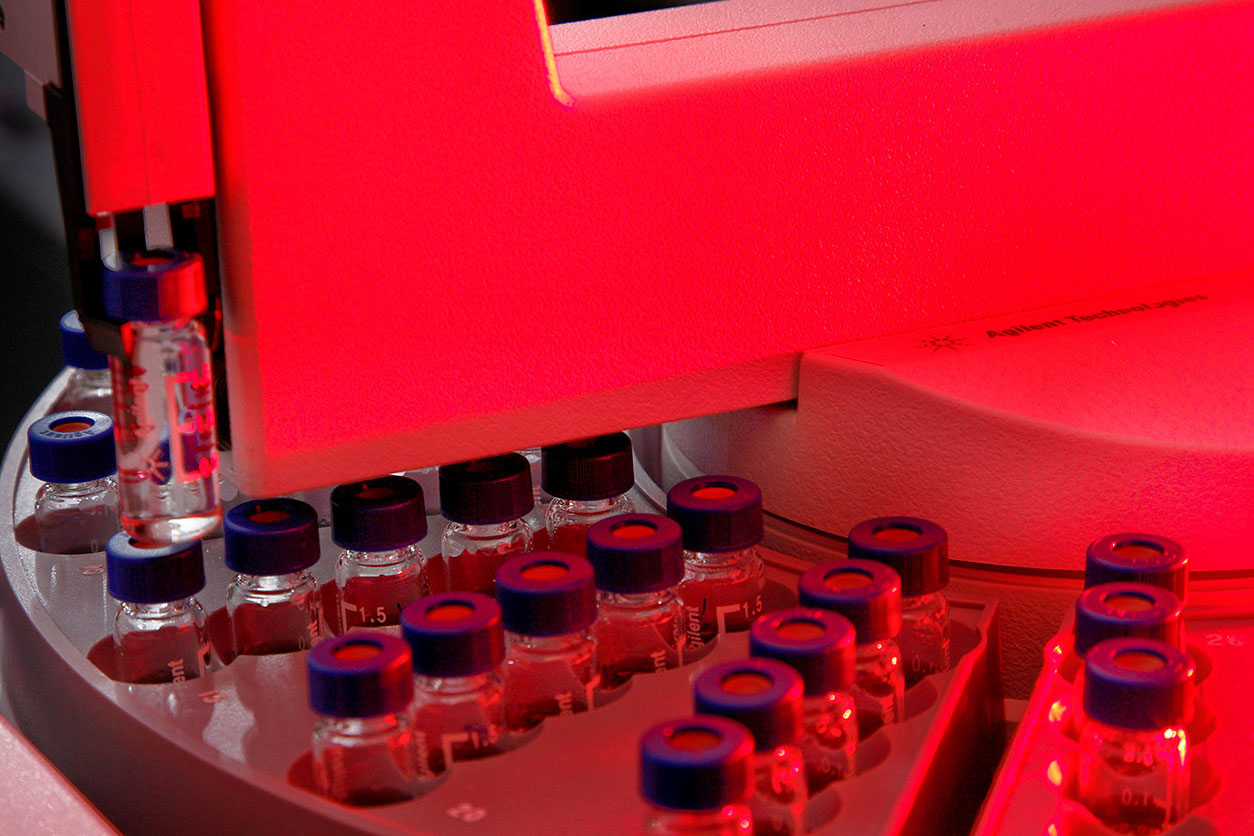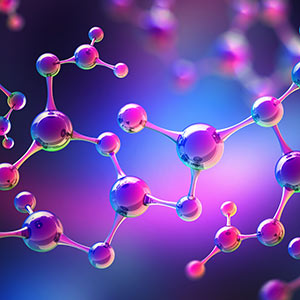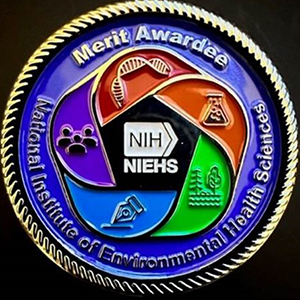 Fessler also leads the NIEHS Clinical Investigation of Host Defense Group. (Photo courtesy of Steve McCaw)
Fessler also leads the NIEHS Clinical Investigation of Host Defense Group. (Photo courtesy of Steve McCaw)NIEHS scientist Michael Fessler, M.D., has been awarded a 2020 National Institutes of Health (NIH) Director’s Challenge Innovation Award for his proposal to advance and standardize metabolomics and lipidomics methods across the NIH Intramural Research Program (IRP), or in-house researchers.
Metabolomics allows scientists to identify and measure the small molecules that an organism produces during metabolism. Lipidomics focuses on fats and their derivatives. Researchers look for connections between disease and changes in these biological molecules.
“The insights that metabolomics have begun to provide into both cell biology and disease pathogenesis are proving foundational and transformative,” said Fessler, head of the NIEHS Immunity, Inflammation, and Disease Laboratory. “This new program will help ensure that intramural NIH not only keeps abreast of but also fully leverages this rapidly evolving field.”
Trans-NIH Metabolomics and Lipidomics Consortium
The award gives Fessler $200,000 per year for two years to lead coordination of the new Trans-NIH Metabolomics and Lipidomics Consortium. Eight other NIH Institutes and Centers (ICs) participate.
- National Cancer Institute (NCI)
- National Eye Institute (NEI)
- National Heart, Lung, and Blood Institute (NHLBI)
- National Institute on Aging (NIA)
- National Institute of Allergy and Infectious Diseases (NIAID)
- Eunice Kennedy Shriver National Institute of Child Health and Human Development (NICHD)
- National Institute of Diabetes and Digestive and Kidney Diseases (NIDDK)
- National Institute of Neurological Disorders and Stroke (NINDS)
 “NIEHS looks forward to partnering with other ICs to create a NIH wide consortium that is greater than the sum of the parts,” Luecke said. (Photo courtesy of Steve McCaw)
“NIEHS looks forward to partnering with other ICs to create a NIH wide consortium that is greater than the sum of the parts,” Luecke said. (Photo courtesy of Steve McCaw)NIEHS Assistant Scientific Director Hans Luecke, Ph.D., is heavily involved in the effort and will assist Fessler in all aspects of the program. Three other NIH scientists are co-leaders for this unique collaboration: T. Michael Redmond, Ph.D., from NEI; John Hanover, Ph.D., from NIDDK; and Catharine Bosio, Ph.D., from NIAID.
The scientists, along with the Consortium Advisory Committee (see sidebar), will advance NIH metabolomics and lipidomics capabilities with the following objectives.
- Staffing of intramural metabolomics efforts, with a central coordinator.
- Creation of a central repository of chemical and reference libraries.
- Design and maintenance of a consortium website to catalogue instrumentation and personnel, and to serve as a place to post upcoming training and events, standard operating procedures, and links to outside resources.
- Establishment of a seminar series and annual scientific meeting for consortium members and other stakeholders.
Fessler and Luecke acknowledged geographic challenges, especially during the current pandemic. The consortium sites are in North Carolina, Montana, and three locations in Maryland.
They will address this separation by meeting regularly by videoconference and phone. By the end of the two years, Fessler and Luecke hope to have a NIH wide Metabolomics Core Facility to handle the needs of all in-house researchers.
Biomarkers of disease
Metabolomics and lipidomics use mass spectrometry and nuclear magnetic resonance to measure the small molecules produced during metabolic processes. Increasingly, researchers are exploring the insights into cell biology these intermediate molecules may provide, including approaches to new diagnostic and therapeutic strategies.
 Autosampler for a gas chromatograph-mass spectrometer that is used for rapid, small molecule analyses. (Image courtesy of Oak Ridge National Laboratory under CC by 2.0 license)
Autosampler for a gas chromatograph-mass spectrometer that is used for rapid, small molecule analyses. (Image courtesy of Oak Ridge National Laboratory under CC by 2.0 license)For example, during illness, certain immune cells repurpose molecules generated from energy-producing biochemical pathways. Scientists have also observed that specific metabolites can reprogram cancer cells. Metabolomic profiling has revealed new disease mechanisms and biomarkers for disorders of the heart, lung, kidney, liver, nervous system, and other organ systems.
“We are very pleased that NIH recognizes the importance and impact of the rapidly emerging fields of metabolomics and lipidomics,” Luecke said.
Filling the need
Currently, NIEHS and a few other ICs have facilities to perform small molecule analysis, but the expertise is not coordinated and procedures are not standardized. Often, NIH scientists send their samples to outside companies for analysis. That is expensive and may not provide the technical support researchers need to interpret the resulting large and complex data sets. The ability to do the work in-house should boost productivity and advance scientific knowledge at NIH.
“It is wonderful that NIEHS is in a position to lead this important trans-NIH initiative,” said NIEHS Scientific Director Darryl Zeldin, M.D. “I was thrilled to learn that [Deputy Director for Intramural Research] Dr. Gottesman will provide seed money to jump start a program that will provide access to cutting-edge metabolomics technologies to the entire IRP.”









